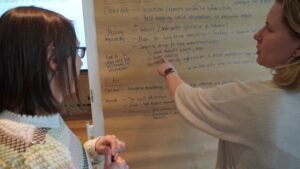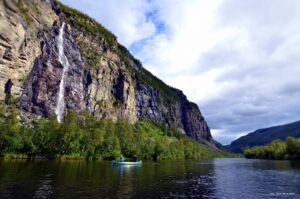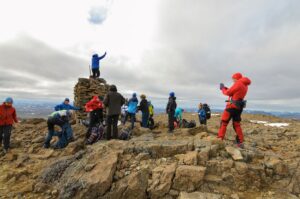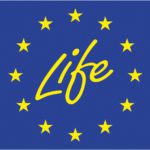EUROPARC Welcomes Newcomers in April 2024
In April 2024, EUROPARC welcomed representatives from Serbia, Italy, and Belgium, each bringing a unique perspective and dedication to preserving Europe’s natural beauty. Let us delve into the backgrounds and aspirations of these new members, and hear directly from three of them about their journey and hopes within EUROPARC.
Serbia: Nurturing Nature’s Heritage
Serbia presents its champions for biodiversity conservation and sustainable practices. Our new member, Ecological Movement ‘Frame of Life’, has been instrumental in fostering community inclusion in decision-making processes regarding ecological matters. With a keen focus on biodiversity preservation and sustainable agriculture, the efforts of this organisation culminated in the establishment of a Community Seed Bank in 2019, safeguarding traditional crop landraces and invaluable knowledge.
Our second Serbian newcommer, University of Belgrade – Faculty of Biology, adds its venerable legacy of 170 years to the EUROPARC community. Renowned for its pivotal role in biological research across the Balkans, particularly in national-level protection efforts, their expertise promises to enrich the EUROPARC network with a wealth of knowledge and experience.
Italy: Preserving Nature’s Tapestry
Italy sends forth representatives deeply embedded in the conservation fabric of the country. Natural Regional Park of Coastal Dunes from Torre Canne to Torre S. Leonardo, focuses on sustainable tourism and heritage preservation, which, in turn, resonates strongly with EUROPARC’s ethos. By promoting slow mobility and nurturing diverse habitats alongside historical landmarks, they exemplify a holistic approach to conservation.
Similarly, the Regional Natural Park of the Sile River reinforces Italy’s commitment to environmental stewardship. With a mission to protect and enhance the environment while supporting traditional economic activities, they stand as guardians of Italy’s natural heritage, ready to collaborate within the EUROPARC community.
Belgium: Uniting Nature and Society
Belgium contributes its visionaries from the Entre-Sambre-et-Meuse National Park, a testament to the country’s dedication to ecological restoration and community engagement. By uniting various natural regions and fostering rewilding initiatives, they underscore the importance of preserving ecological richness while enhancing local livelihoods. Through environmentally-friendly activities and robust visitor facilities, they aim to reconnect people with nature, ensuring a sustainable future for generations to come.

In exclusive interviews, Santina Grande from the Regional Natural Park of the Sile River, Jelica Novaković from the University of Belgrade, and Ivana Radović from Ecological Movement ‘Frame of Life’ share their impressions and aspirations within EUROPARC:
- What impressed you most about EUROPARC’s mission and objectives?
Santina Grande: The objectives and missions of EUROPARC are the common objectives of the entities that manage protected natural areas. It’s impressive to see a unified approach across diverse European landscapes, highlighting the importance of addressing different realities on a continental scale.
Jelica Novaković: What impressed us most about your mission and objectives was your commitment to the expansion of protected areas, networking, and support for projects that maintain the landscape.
Ivana Radović: We liked the core values and principles that shape the work of EUROPARC. Protection of nature is not possible without these core values, which encourage us to overcome individual interest for the sake of the interests of society. We also appreciate the devotion to restore the connection of people with nature.
- How do you plan to contribute to our community and our common goals?
Santina Grande: Despite the challenges faced by our park, including limited staffing and resources, I am fully dedicated to supporting EUROPARC in any initiatives that impact our park’s territory.
Jelica Novaković: We want to share knowledge and experience through collaboration with colleagues and act at a local level to protect and promote the conservation of protected areas in our country.
Ivana Radović: We can contribute in the areas of sustainable agriculture and agroecology, participatory approaches to local communities and in the domain of use of citizen science in protected areas.
- Are there any particular benefits or resources you hope to gain from your membership of EUROPARC?
Santina Grande: As a new member of EUROPARC, I look forward to the invaluable benefits of engaging in cross-national and European-level comparisons.”
Jelica Novaković: We hope to collaborate with colleagues from around the world, share skills and experiences, and form teams for international projects in the field of nature improvement and protection.”
Ivana Radović: We would be delighted to gain knowledge and experience through EUROPARC membership, connecting with fellow members to support one another in activities and projects. Specifically, we hope to forge connections with initiatives in South-East Europe.
With these new members, EUROPARC strengthens its dedication to conservation, promoting collaboration and innovation worldwide. Together, they share a vision of protecting Europe’s natural wonders, driving towards a sustainable and harmonious future
Out now: Siggen Seminar 2024 Report!
From 4 – 6 of March, Marine Protected Area experts gathered at Gut Siggen in Germany to discuss how we can achieve more Effective Management of Marine Protected Areas.
Catching the wave: How can we achieve more effective management in Marine Protected Areas?
The EU Biodiversity Strategy set an ambitious target for 2030, with at least 30% of the sea area to be legally protected (with 10% of the sea area to be strictly protected) by 2030. Furthermore, it clearly identifies the urgency to ensure that all Protected Areas across Europe are effectively managed, with the realisation of conservation objectives and appropriate monitoring. As such, Marine Protected Areas (MPAs) have an important role to play and are called to make a serious effort to improve their effectiveness.
But what do MPAs need to do to reach this target, and how can progresses be monitored and assessed? What guidance, tools and methods would be helpful to improve the management of our MPAs?

Participants exchange at the 2024 Siggen Seminar
To start working on answers to these questions, exchange experience and learn from each other, 10 experts in Marine Conservation gathered at Gut Siggen in Germany. Valuable inputs were provided by expert Sue Wells, who has worked with IUCN, WWF and many other organisations on the topic of Management Effectiveness. She is currently a member of IUCN WCPA Marine Management Effectiveness Task Force.
Seminar objectives
With this seminar, we aimed to:
- Increase participant’s knowledge on why management effectiveness is at the core of EU conservation strategies;
- Share experience on main challenges that undermine effective management of MPAs;
- Acquire knowledge on some of the most common/recommended indicators to assess Management Effectiveness.
Practical approach
To ground the discussions and exercises, three case studies were used as the basis:
- Thea Hamm presented the Lower Saxon Wadden Sea National Park, Germany.
- Lasse Kurvinen presented the Bothnian Sea National Park, Finland.
- Josefine Gottschalk presented the Pomeranian Bay – Rønne Bank Nature Conservation Area.
These case studies provided real life examples of how Management Effectiveness can be implemented and were at the base of all group exercises. Group exercises focussed on the importance of indicators, monitoring and evaluation and how Management Effectiveness fits into the adaptive management cycle. Check out the report for all insights! Furthermore, all presentations and handouts can be found at the event archive page here.
EUROPARC wants to thank all participants for their active contributions. A special thanks is of course also extended to the Alfred Toepfer Stiftung for welcoming us at Gut Siggen.

Experience the Magic of the Háldi Transboundary Area during the 2024 TransParcNet Meeting!
Photo: Mollis Til Sieimma
Come join us from September 2nd to 5th, 2024, for an unforgettable TransParcNet Meeting in Háldi Transboundary Area, hosted by Finland and Norway!
What is TransParcNet Meeting?
TransParcNet Meeting is the annual meeting of network of all certified EUROPARC Transboundary Parks. This meeting plays a vital role in promoting transboundary cooperation amongst European Protected Areas. By facilitating dialogue and collaboration between neighbouring parks, the event encourages the sharing of resources, expertise, and experiences to enhance conservation efforts and sustainable development in border regions.
About the event’s location
This year’s TransParcNet Meeting will take place in the stunning Háldi Transboundary Area, where Norway’s Reisa National Park and Ráisduottarháldi Protected Landscape Area meet Finland’s Käsivarsi Wilderness Area. Covering 3000 km² of untouched nature, this place is like nowhere else, with no towns or people, just pure wilderness where animals roam free and adventures await.

Photo credits: Rune Benonisen
Programme
We will start the meeting by exploring the nuances of climate change impacts in the Fennoscandian High North through insightful discussions led by expert speakers. We will then delve into the realm of climate change adaptation tools and uncover the latest advancements in this field. Additionally, insights into EU policies supporting cross-border cooperation will be provided. Furthermore, participants will have the opportunity to address transboundary issues through their own short presentations, fostering dialogue and collaboration amongst attendees!
All Are Welcome
Whether you’re already part of EUROPARC’s Transboundary Programme or simply interested in learning more about it for potential future participation, we invite you to join us! Secure your spot now by registering here and be a part of this exciting event.

Photo credits: Rune Benonisen
Registration PageWhat to bring
In the Arctic, September can surprise us with all kinds of weather. That’s why we recommend packing smart. Bring layers, a good jacket, warm gloves, and sturdy shoes. Don’t forget your backpack for snacks and water, plus sunglasses to enjoy the sunny days. Have a look at the registration page above to get all detailed information!
Out now: European Day of Parks Social Media Pack!
Neusiedlersee National Park (AT). Photo by sebastianfreiler.com
Let’s collectively speak up for Europe’s Parks and Protected Areas this European Day of Parks (EDoP)!
Vote for Nature
With this year’s theme “Vote for Nature – Bring policy decisions to life” EUROPARC wants to highlight just how important our Parks and Protected Areas are for the implementation of (nature) policies and global agreements.
All information on this year’s EDoP
As always, we ask the wider Protected Area network to organise events on and around the 24th of May. Furthermore, this year we want to show a united voice across social media. Let’s highlight to the general public and policy-makers all that our protected natural spaces are doing for the benefit of the wider society.
To help Parks, Protected Areas and parter organisations get started, we have created a special European Day of Parks 2024 Social Media Pack. It contains key messages, images and further interesting reading to underline how Parks and Protected Areas are bringing policies to life!
Share this with your communications team and be sure to post across social media on the 24th of May. Of course, don’t forget to tag EUROPARC:
- Facebook & X: @EUROPARC;
- Instagram: @EUROPARC_Federation;
- LinkedIn: @EUROPARC Federation
and use #EDoP2024, #VoteForNature and/or #EuropeanDayOfParks.
We look forward to seeing your events, activities and posts!

The European Day of Parks is made possible through funding of the LIFE Programme. Views and opinions do not necessarily reflect that of the European Commission or of CINEA.